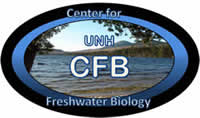Abstract
Zealand Pond, New Hampshire, was chosen as the site of a remote lake study. Data were collected between July 18 and August 29,1997. Zealand Pond had a relatively high pH (6.3-6.9) and alkalinity (2.3- 3.1 mg CaCO3 /liter), considering its small size and elevation (752 m). The lake was not thermally stratified, presumably due to its shallow depth and exposure to wind. Zealand Pond had a diverse zooplankton community, with two calanoid copepod species (Hesperodiaptomus wilsonae and Leptodiaptomus ashlandi), two cyclopoid copepods (Mesocyclops edax and Ectocyclops phaleratus), six cladoceran species (Daphnia ambigua, Daphnia pulex, Ceriodaphnia reticulata, Bosmina longirostris, Alona costata, and Polyphemus pediculus), and two rotifer species (Keratella taurocephala and Conochilus sp.). Densities of zooplankton ranged from 57.6 (Hesperodiaptomus) to 0.04 (Alona) animals per liter. Zooplankton species were documented with photographs and key identifying features. Low densities of fish were also present in the lake. Features of Zealand Pond are compared to other high altitude lakes.
Publication Date
1-1-1999
Publisher
UNH Center for Freshwater Biology Research
Document Type
Article
Recommended Citation
LeFevre, Anne, "Limnological study of Zealand Pond, White Mountains, New Hampshire" (1999). Center for Freshwater Biology. 17.
https://scholars.unh.edu/cfb/17

